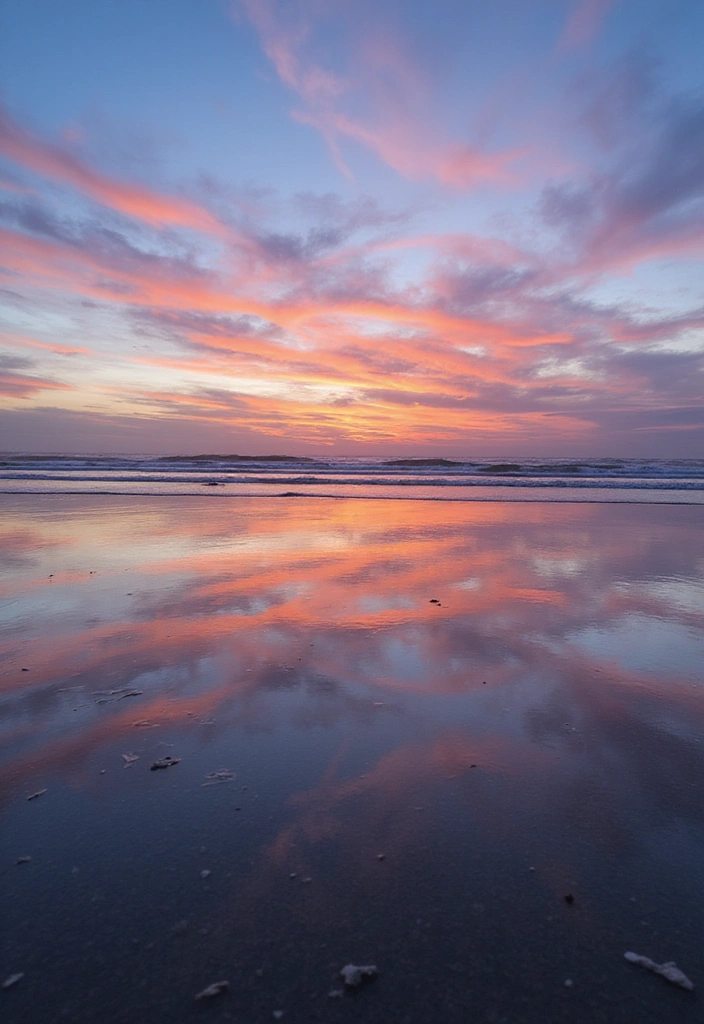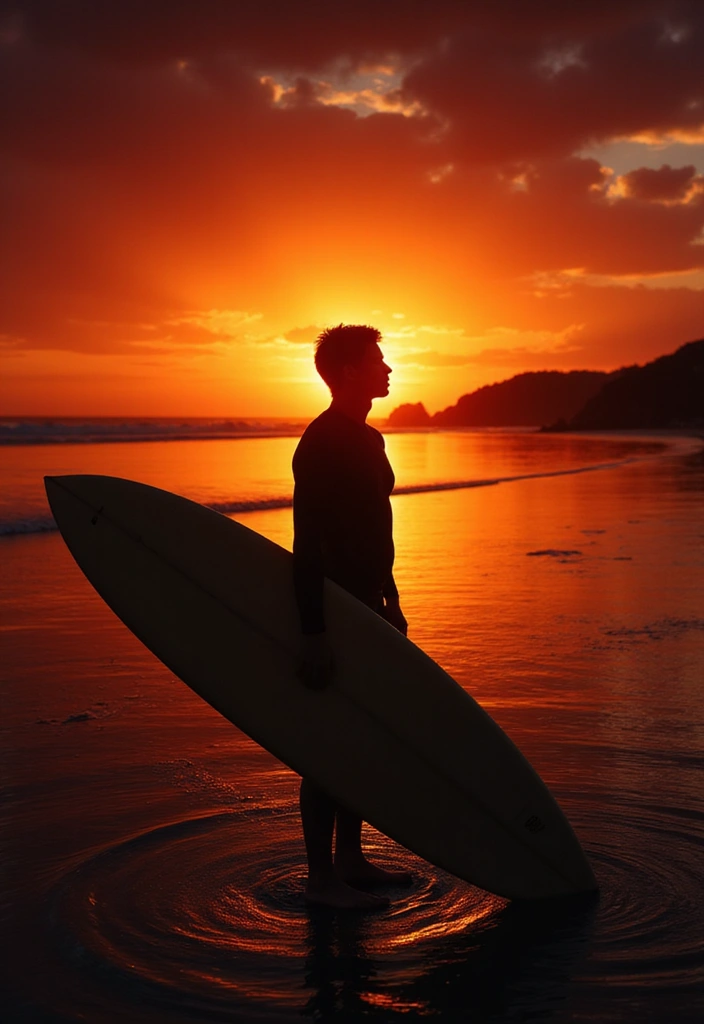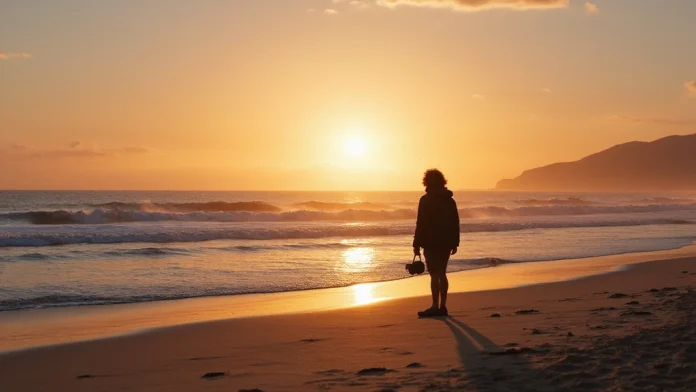10 Stunning Beach Photography Tips for Solo Travelers
The beach is an endless canvas where solo travelers can capture breathtaking moments, but the trick lies in mastering beach photography.
From the sparkling blue waves to the serene sunsets, every grain of sand tells a story waiting to be captured.
Embrace the challenge of taking stunning photos on your own, where each shot reflects your unique perspective.
Let’s dive into ten fabulous tips that will elevate your beach photography game and make your travel memories even more vibrant!
1. Timing is Everything: Golden Hour Magic

Capturing the perfect beach shot hinges on one golden rule: timing! The golden hour—the hour just after sunrise and just before sunset—provides soft, flattering light that transforms ordinary photos into mesmerizing works of art.
During this time, the sun casts a warm glow over everything, creating stunning contrasts and vibrant colors.
Here’s how to make the most of it:
– Arrive early to scout the best spots before the sun starts to rise.
– Experiment with angles; low shots capturing the sun near the horizon often yield the most captivating images.
– Keep an eye on the weather; cloudy skies can create a unique atmosphere and enhance the dramatic effect in your photos.
With patience and planning, you’ll be able to immortalize those magical moments when the sun kisses the sea.
2. Focus on Composition: Rule of Thirds

Composition can make or break a photo, and the rule of thirds is a game-changer in beach photography.
Imagine breaking your frame into nine equal parts, where two horizontal lines and two vertical lines intersect. Placing your focal point along these lines, or at their intersections, creates natural balance and interest.
Think about these tips:
– Position the horizon on one of the horizontal lines rather than in the center; this makes the sky or the water more engaging.
– Frame your subject—whether it’s a seashell, a person, or a brush of seaweed—off-center to draw the eye.
– Use leading lines, like a sandy path or the curve of a wave, to guide viewers toward your main focus.
This insightful technique can elevate your beach photos from snapshots to art pieces.
3. Play with Perspectives: Get Low!

Changing your perspective can give your beach photography an extraordinary twist. Rather than standing upright, consider crouching down to capture images from a lower angle.
Doing so can emphasize the foreground elements like shells or footprints, while making the background dramatic with towering waves or vibrant skies.
Here are some practical ways to play with perspective:
– Get close to your subjects; the details matter! Capture the texture of grains of sand or the sparkle of water droplets.
– Incorporate the horizon by including more of the sky in your shots, creating a sense of grandeur.
– Don’t be afraid to lie on the sand to get those intimate, eye-level shots of beachgoers or wildlife.
Each shift in perspective offers a new story waiting to tell.
4. Embrace Reflections: Mirror Magic

Reflections can add a touch of magic to your beach photography. Whether it’s the vivid colors of a sunset reflecting off wet sand or the mesmerizing patterns in tidal pools, embracing reflections can create stunning visual effects.
Here’s how to harness this artistic technique:
– Capture early morning shots when the water is calm, as the surface can become a perfect mirror.
– Try shooting in locations with puddles or tidal pools that catch the sky’s colors.
– Experiment with different angles; tilting your camera slightly can enhance the symmetry of the reflection.
Using reflections brings a whole new dimension to your photos and can transform a typical beach shot into a captivating story.
5. Utilize Leading Lines: Draw the Eye

In beach photography, leading lines guide the viewer’s eyes towards your main subject, creating an irresistible flow in the composition. Think about the natural lines that beach landscapes offer, from winding paths to the edges of the shoreline.
Here’s how to master this technique:
– Use the natural lines of the beach, such as ripples in the sand or the curve of the water’s edge, to draw attention to your subject.
– Create depth by incorporating multiple leading lines within the frame.
– Look for man-made elements too, like piers or beach chairs, which can add an interesting focal point.
Mastering leading lines not only enhances visual interest but also creates a connection between your subject and the surrounding landscape.
6. Capture Motion: Freeze the Action

The beach is often alive with motion—waves crashing, kids splashing, or kites soaring through the sky. Capturing these dynamic moments can add energy to your photos.
Here are some tips to freeze the action:
– Use a fast shutter speed to capture swift movements without blur. For example, set your camera to at least 1/500th of a second.
– Consider a continuous shooting mode to capture a series of shots in quick succession, increasing the chances of catching the perfect moment.
– Explore slow shutter speeds for a dreamy effect, especially with waves; you can capture their motion while still keeping your subject sharp.
Embrace the chaos of life at the beach; it’s often where the most memorable photos come from.
7. Capture the Details: Macro Focus

When it comes to beach photography, sometimes it’s the little things that tell the biggest stories. Macro photography allows you to zoom in on the textures and details that often go unnoticed.
Here are ways to dive into macro focus:
– Get a good macro lens or use a close-up filter to capture intricate details of shells, seaweed, or tiny beach critters.
– Natural light is your best friend. Shoot during the day when sunlight enhances colors and highlights textures.
– Consider using a tripod to keep your camera steady, especially in low-light conditions or when focusing on small subjects.
By paying attention to the details, you can unveil the hidden beauty of the beach, creating a unique narrative through your lens.
8. Experiment with Silhouettes: Outline the Story

Silhouette photography is a striking way to tell a story while spotlighting your subject against a vibrant backdrop. Beaches provide the perfect canvas for creating stunning silhouettes, particularly during sunset.
Here’s how to master this technique:
– Position your subject between you and the setting sun. Aim for a backlight effect to turn your subject into a dark outline.
– Use a small aperture (high f-stop number) to ensure your subject is well-defined against the bright background.
– Try capturing people or objects like palm trees to create dramatic shapes against the colorful sky.
This style not only adds depth to your beach photography but also provides a sense of mystery and intrigue.
9. Post-Processing: Enhance Your Shots

Once you’ve captured your stunning beach photos, it’s time to give them a little love through post-processing. Enhancing colors, adjusting brightness, and sharpening details can take an ordinary shot into a standout memory.
Here are some useful editing tips:
– Use editing software like Adobe Lightroom or mobile apps like Snapseed to adjust the exposure and contrast.
– Don’t be afraid to play with saturation; beach photos can often benefit from enhanced blues and warm tones.
– Crop your images to tighten the composition and remove any distractions.
Remember, the goal is to enhance the beauty of your shot without overdoing it. A little touch-up can make your beach photos truly shine!
10. Join the Community: Share and Inspire

Finally, don’t forget the joy of sharing your beach photography adventures! Engaging with fellow photographers not only inspires but also allows you to learn and grow.
Here’s how to connect with a community:
– Share your work on social media platforms like Instagram or Pinterest using popular hashtags, which can help your photos reach a broader audience.
– Join photography groups or forums where you can get feedback on your work and learn from others.
– Attend local meetups or workshops that focus on beach photography, as they offer great opportunities to connect with like-minded individuals.
Sharing your journey helps keep the love for beach photography alive and fosters creativity among fellow solo travelers.
Conclusion

Armed with these ten stunning beach photography tips, you’re all set to create visual memories that will last a lifetime!
Remember, every solo travel experience is unique and so are your photos.
Don’t shy away from experimenting, and most importantly, have fun with your beach photography journey!































